I use the following code in a Thread to capture raw audio samples from the microphone and play it back through the speaker.
public void run(){
short[] lin = new short[SIZE_OF_RECORD_ARRAY];
int num = 0;
// am = (AudioManager) this.getSystemService(Context.AUDIO_SERVICE); // -> MOVED THESE TO init()
// am.setMode(AudioManager.MODE_IN_COMMUNICATION);
record.startRecording();
track.play();
while (passThroughMode) {
// while (!isInterrupted()) {
num = record.read(lin, 0, SIZE_OF_RECORD_ARRAY);
for(i=0;i<lin.length;i++)
lin[i] *= WAV_SAMPLE_MULTIPLICATION_FACTOR;
track.write(lin, 0, num);
}
// /*
record.stop();
track.stop();
record.release();
track.release();
// */
}
where record is an AudioRecord and track is an Audiotrack. I need to know in detail (and in a simplified way if possible) how the AudioRecord stores PCM data and AudioTrack plays PCM data. This is how I have understood it so far:

As the while() loop is continuously running, record obtains SIZE_OF_RECORD_ARRAY number of samples (which is 1024 for now) as shown in the figure. The samples get saved contiguously in the lin[] array of shorts (16 bit shorts, as I am using 16 bit PCM encoding). This is done by record.read(). Then track.write() places these samples in the speaker which is played by the hardware. Is this correct or am I missing something here?